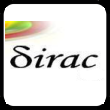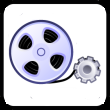

 |
 | The Schrödinger Project |
1. Why is the project called Schrödinger?
The project is named after Erwin Schrödinger who won the Nobel prize together with Paul Dirac who the Dirac codec is named after. For more information about Erwin Schrödinger check Wikipedia. Schrödinger is probably most famous for his thought experiment 'Schrödingers cat'.
2. What is Dirac?
Dirac is a open and royalty free high quality codec developed by BBC Research and Development. You find more information about the Dirac codec on the Dirac homepage. Dirac is named after famous british theoretical physicist and Nobel prize winner Paul Dirac.
3. Is there a FAQ for Dirac itself?
Yes, you can find it on the Dirac website.
4. Who is BBC Research and Development?
BBC Research and Development is the research branch of the British Broadcasting Corporation, the main television broadcaster in the United Kingdom and internally known for their BBC World TV and Radio broadcasts. For more information about BBC Research and Development check out their website.
5. Who wrote the Schrodinger library?
Schrodinger has been written by David Schleef. More information about David can be found on the website of his company Big Kitten.
6. Who is Fluendo?
Fluendo is a company specializing in GNU/Linux and Unix multimedia. You can find out more about Fluendo on the Fluendo webpage.
7. Who exactly created the Dirac codec?
Dirac was created at BBC Research and Development. The developer behind Dirac is Thomas Davies.
8. Which container formats do you recommend?
The goal is to offer Dirac support for a range of container formats, with MXF being one of the primary targets. As part of this project we have already defined mappings for the Ogg and MPEG TS container formats. Check our documentation page for details on those.
9. What audio codec should I use with Dirac?
If you want a good high quality audio format that is available under royalty free terms like Dirac is then we suggest you take a look at the Vorbis audio codec or FLAC lossless audio codec developed by Xiph.org
10. What software will support this codec?
Since we will develop GStreamer plugins together with the libraries developed as part of this project most GStreamer based products should automatically get support for Dirac when these plugins are installed. In addition to this Fluendo will ensure that the Flumotion Streaming Server, the Pitivi non-linear video editor and the Totem Video player works perfectly with the created plugins.
We are also hoping that other multimedia related projects will adopt and use these libraries to get Dirac support.
11. What license will these libraries use?
These libraries will be triple licensed under the MPL,GNU LGPL and MIT licenses, and can thus be used under the terms of any of these three licenses.
12. What is liboil?
Liboil is a library for doing low-level optimizations. The creator of liboil, David Schleef, is also working on this project. For more information about liboil check the liboil homepage.
13. What programing language will be used? Will it be portable?
The libraries themselves will be developed in ANSI C89 and special Dirac optimizations will be developed in both C and Assembly in the liboil library. The libraries will be developed to be as portable as possible.
| Sourceforge Project Page | Dirac Homepage | Source Code Instructions | Documentation | Development Mailing list | Frequently Asked Questions |